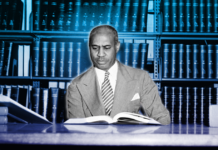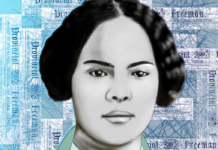Four years ago, nervous students with anxious parents set out to begin their college careers at the University of Virginia. We celebrated their high school achievements, patted them on the back, and hoped that we prepared them for the road ahead. On move-in day, they came face-to-face with the Klu Klux Klan.
Our students were not prepared for the reality of race-related hatred in this country. On their first day of college, many of our beloved students confronted this brand of racism for the first time. Many were injured. Life was lost.
As a Black woman, a social equity advocate, educator, and human being — our preparation has not been enough. Nationally, our approach to the manifestations of racism and white supremacy is radio silence, allowance and ignorant bliss.
Our schools, in their practices and positions, are, in many cases, just as inequitable, just as uncomfortable, and just as unsafe for black and brown people as the campus of the University of Virginia was in 2017.
Our schools, in their practices and positions, are, in many cases, just as inequitable, just as uncomfortable, and just as unsafe for Black and brown people as the campus of the University of Virginia was in 2017.
What Are We Saying to Black and Brown Kids?
That year, educators in my district were asked to assemble into a reflective circle, taking a moment of silence in reverence of the terrifying Ku Klux Klan rally that took place on the campus of UVA that weekend, and to reflect upon the horrible events that followed.
Two minutes of silence was all we had time for.
I was even more disheartened that, after two minutes of silence, the answer to this call was a simple credo, a statement of words that were half-lived, and even less believed by the people in the room. That we were a team, that we loved each other like family, and that our lived experiences are affirmed here, but we only had two minutes to silently process and reflect.
I sat in professional development spaces with individuals from all walks, all religions, and all races, and wondered if they noticed that there had been no Black exemplar teachers portrayed in our video observations.
I wondered what my colleagues would say to their black and brown students when it came time to discuss what happened in Charlottesville.
In those spaces, I wondered what my colleagues would say to their Black and brown students when it came time to discuss what happened in Charlottesville. Were they willing to address the realities of racism in our nation and communities?
I wondered if another two minutes would be spent silently reflecting for the sake of returning to the lesson plan.
I realized then that in our two minutes of silence, we made Charlottesville acceptable. In our silence, we perpetuated the system of oppression. In our silence, we told the Black and brown kids to move on, to get over it.
And we’re here again.
What are we saying to Black and brown kids?
That a moment of silence is all we have time for today? That the Klan will march your college campuses? But you must endure it because, well, it will happen again? That silence is how we handle racism?
It’s Time for Educators to Take a Stand
First, we acknowledge that it is equally important for educators to know how to create safe spaces for Black and brown students to digest, dissect and discuss race, racism, and injustice, as it is for educators to understand how to create an objective aligned learning outcome. It is equally important for our school systems to have Chief Academic Officers and Chief Equity Officers.
As educators, we are the front line of defense for our students, but we have not properly equipped teachers to face the oncoming battles of our time.
As educators, we are the front line of defense for our students, but we have not properly equipped teachers to face the oncoming battles of our time. We tell black kids, “Work hard, do your best, follow instructions, ask for help…” but we don’t give them room to ask. We tell them we believe, but we don’t take the time to hear their stories. We tell them they matter, then we force them to remain silent.
We could be the systemic change we so desire if we simply took the time to prioritize and validate the voices and experiences of our Black and brown students. Instead of taking a moment of silence, what about a few hours of debriefing, planning, and positioning ourselves to be used as social change agents inside and outside of the classroom? What about affinity spaces; where Blacks and Latinos, Asians and whites, women and southerners were all able to grieve, process, and plan for these conversations amongst themselves in order to reach all of the needs of our all of our students?
What happened to assigning ourselves, to being champions for our students — to finding a solution where there isn’t one? When will we as organizations and educational entities take the time to practice what we preach?
It is time for our educators — Black, brown, and white — to take a bold stand against injustice and racism
It is high time for our schools to be the beacons of light that we have promised to students and families, and it is time for our educators — Black, brown, and white — to take a bold stand against injustice and racism, to refuse to remain ignorant and to take timely action against inequity by refusing silence in our work.
Educators must create safe spaces for all children to discuss the impacts of racism in this country. Not just for Black and brown children, but for the white kids who will support this movement too.










